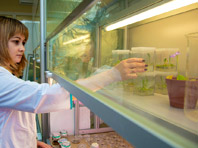Журнал "Медицинский совет" №13/2020
DOI: 10.21518/2079-701X-2020-13-148-154
М.В. Леонова, ORCID: 0000-0001-8228-1114, e-mail: anti23@mail.ru
Ассоциация клинических фармакологов России; 400131, Россия, Волгоград, площадь Павших Борцов, д. 1
Проблема вагинальных инфекций у женщин (БВ и ВВК) остается актуальной как в связи с высокой распространенностью, так и в связи с недостаточной эффективностью противомикробной терапии и риском рецидивирования. Одним из путей решения является применение пробиотиков, в частности пробиотических лактобактерий, выполняющих защиту вагинальной среды против патогенов. В группе вагинальных лактобактерий доминирующими являются L. crispatus, L. iners, L. jensenii, L. gasseri.
Лактобактерии во влагалищной среде обеспечивают важные защитные функции против патогенов благодаря продукции молочной и других органических кислот, поддерживающих рН < 4,5, высокой способности к адгезии эпителия и агрегации, с образованием биопленки и биосурфактантов, ингибированию связывания и адгезии патогенных бактерий, а также продукции антимикробных веществ, таких как H2O2, бактериоцины, и регуляции локального эпителиального иммунитета. Пробиотические лактобактерии могут применяться как вагинально, так и орально, эффективно колонизируя вагинальную среду. Проведено несколько метаанализов рандомизированных клинических исследований (РКИ) по оценке эффективности пробиотиков как в комбинации с антибиотиками, так и в монотерапии. Эффективность пробиотиков при БВ была подтверждена в 4 метаанализах, показавших значимое увеличение частоты излечения (ОР более 1,53), в том числе в режиме монотерапии без применения антибиотиков (ОР более 2,57). Эффективность пробиотиков при оральном применении превосходила вагинальные формы. В одном метаанализе РКИ была подтверждена эффективность пробиотических лактобактерий при ВВК как в достижении более высокой частоты излечения при оральном и вагинальном применении (ОР 1,41 и ОР 1,11 соответственно), так и в снижении частоты рецидивирования (ОР 0,34). Пробиотики включены в клинические рекомендации США, Канады с уровнем доказательности I–II, а также в отечественные рекомендации в качестве второго этапа лечения после курса противомикробной терапии.
Таким образом, применение пробиотиков представляет альтернативную стратегию и способствует улучшению результатов лечения благодаря восстановлению экосистемы влагалища.
Для цитирования: Леонова М.В. Пробиотики в лечении вагинальных инфекций: эффективность с позиции доказательной медицины. Медицинский совет. 2020;(13):148–154. doi: 10.21518/2079-701X-2020-13-148-154.
Конфликт интересов: автор заявляет об отсутствии конфликта интересов.
Probiotics in the treatment of vaginal infections: efficacy from the perspective of evidence-based medicine
Marina V. Leonova, ORCID: 0000-0001-8228-1114, e-mail: anti23@mail.ru
Association of Clinical Pharmacologists of Russia; 1, Pavshikh Bortsov Square, Volgograd, 400131, Russia
The problem of vaginal infections in women (BV and VVC) remains relevant due to both the high prevalence and the lack of effectiveness of antimicrobial therapy and the risk of recurrence. One solution is to use probiotics, in particular probiotic lactobacilli that protect the vaginal environment from pathogens. The group of vaginal lactobacteria is dominated by L. crispatus, L. iners, L. jensenii, L. gasseri.
Lactobacteria in the vaginal environment provide important protective functions against pathogens due to the production of lactic and other organic acids that maintain pH < 4.5, high ability to adhere to epithelium and aggregation, with the formation of biofilm and biosurfactants, inhibition of binding and adhesion of pathogenic bacteria, as well as products of antimicrobial substances such as H2O2, bacteriocins, and regulation of local epithelial immunity. Probiotic lactobacteria can be used both vaginally and orally, effectively colonizing the vaginal environment. Several meta-analyses of randomized clinical trials (RCTs) were performed to evaluate the efficacy of probiotics in combination with antibiotics and in monotherapy. The efficacy of probiotics in BV was confirmed in 4 meta-analyses, which showed a significant increase in the frequency of treatment (RR more than 1.53), including in monotherapy without antibiotics (RR more than 2.57). The efficiency of probiotics in oral use exceeded vaginal forms. In one meta-analysis of RCTs the efficacy of probiotic lactobacteria in VVC was confirmed both in achieving a higher cure rate in oral and vaginal use (RR 1,41 and RR 1,11 respectively), and in reducing the frequency of relapse (RR 0,34). Probiotics are included in clinical recommendations of the USA, Canada with the level of evidence I-II, as well as in domestic recommendations as the second stage of treatment after antimicrobial therapy.
Thus, the use of probiotics represents an alternative strategy and helps to improve treatment results through the restoration of the vaginal ecosystem.
For citation: Leonova M.V. Probiotics in the treatment of vaginal infections: efficacy from the perspective of evidence-based medicine. Meditsinskiy sovet = Medical Council. 2020;(13):148–154. (In Russ.) doi: 10.21518/2079-701X-2020-13-148-154.
Conflict of interest: the authors declare no conflict of interest.
Загрузить файл в формате PDF
Список литературы / References
- Kenyon C., Colebunders R., Crucitti T. The global epidemiology of bacterial vaginosis: a systematic review. Am J Obstet Gynecol. 2013;209(6):505–523. doi: 10.1016/j.ajog.2013.05.006.
- Leitich H., Kiss H. Asymptomatic bacterial vaginosis and intermediate flora as risk factors for adverse pregnancy outcome. Best Pract Res Clin Obstet Gynaecol. 2007;21(3):375–390. doi: 10.1016/j.bpobgyn.2006.12.005.
- van Oostrum N., De Sutter P., Meys J., Verstraelen H. Risks associated with bacterial vaginosis in infertility patients: a systematic review and metaanalysis. Hum Reprod. 2013;28(7):1809–1815. doi: 10.1093/humrep/det096.
- Marrazzo J.M. Interpreting the epidemiology and natural history of bacterial vaginosis: are we still confused? Anaerobe. 2011;17(4):186–190. doi: 10.1016/j.anaerobe.2011.03.016.
- Bradshaw C.S., Morton A.N., Hocking J., Garland S.M., Morris M.B., Moss L.M. et al. High recurrence rates of bacterial vaginosis over the course of 12 months after oral metronidazole therapy and factors associated with recurrence. J Infect Dis. 2006;193(11):1478–1486. doi: 10.1086/503780.
- Swidsinski A., Mendling W., Leoning-Baucke V., Swidsinski S., Dörffel Y., Scholze J. et al. An adherent Gardnerella vaginalis biofilm persists on the vaginal epithelium after standard therapy with oral metronidazole. Am J Obstet Gynecol. 2008;198(1):97.e1–97.e6. doi: 10.1016/j.ajog.2007.06.039.
- Sobel J.D. Recurrent vulvovaginal candidiasis. Am J Obstet Gynecol. 2016;214(1):15–21. doi: 10.1016/j.ajog.2015.06.067.
- Blostein F., Levin-Sparenberg E., Wagner J., Foxman B. Recurrent vulvovaginal candidiasis. Ann Epidemiol. 2017;27(9):575–582. doi: 10.1016/j.annepidem.2017.08.010.
- Lamont R.F., Sobel J.D., Akins R.A., Hassan S.S., Chaiworapongsa T., Kusanovic J.P., Romero R. The Vaginal microbiome: new information about genital tract flora using molecular based techniques. BJOG. 2011;118(5):533–549. doi: 10.1111/j.1471-0528.2010.02840.x.
- Falagas M., Betsi G.I., Athanasiou S. Probiotics for the treatment of women with bacterial vaginosis. Clin Microbiol Infect. 2007;13(7):657–664. doi: 10.1111/j.1469-0691.2007.01688.x.
- Reid G., Beuerman D., Heinemann C., Bruce A.W. Probiotic Lactobacillus dose required to restore and maintain a normal vaginal flora. FEMS Immunol Med Microbiol. 2001;32(1):37–41. doi: 10.1111/j.1574-695X.2001.tb00531.x.
- Santos C.M.A., Pires M.C.V., Leao T.L., Hernandez Z.P., Rodriguez M.L., Martins A.K.S. et al. Selection of Lactobacillus strains as potential probiotics for vaginitis treatment. Microbiology. 2016;162(7):1195–1207. doi: 10.1099/mic.0.000302.
- Haya J., García A., López-Manzanara C., Balawi M., Haya L. Importance of lactic acid in maintaining vaginal health: a review of vaginitis and vaginosis etiopathogenic bases and a proposal for a new treatment. Open J Obstet Gynecol. 2014;4(13):787–799. doi 10.4236/ojog.2014.413109.
- Alakomi H.L., Skyttä E., Saarela M., Mattila-Sandholm T., Latva-Kala K., Helander I.M. Lactic acid permeabilizes gram-negative bacteria by disrupting the outer membrane. App Environ Microbiol. 2000;66(5):2001–2005. doi: 10.1128/aem.66.5.2001-2005.2000.
- Gil N.F., Martinez R.C.R., Gomes B.C., Nomizo A., De Martinis E.C.P. Vaginal Lactobacilli as potential probiotics against Candida spp. Braz J Microbiol. 2010;41(1):6–14. doi: 10.1590/S1517-83822010000100002.
- Gomaa E.Z. Antimicrobial and anti-adhesive properties of biosurfactant produced by lactobacilli isolates, biofilm formation and aggregation ability. J Gen Appl Microbiol. 2013;59(6):425‒436. doi: 10.2323/jgam.59.425.
- Ventolini G. Update on vaginal Lactobacilli and biofilm formation. J Bacteriol Mycol. 2014;1(1):2 Available at: https://austinpublishinggroup.com/.
- Saunders S., Bocking A., Challis J., Reid G. Effect of Lactobacillus challenge on Gardnerella vaginalis biofilms. Colloids Surf B Biointerfaces. 2007;55(2):138–142. doi: 10.1016/j.colsurfb.2006.11.040.
- McMillan A., Dell M., Zellar M.P., Cribby S., Martz S., Hong E. et al. Disruption of urogenital biofilms by Lactobacilli. Colloids Surf B Biointerfaces. 2011;86(1):58–64. doi: 10.1016/j.colsurfb.2011.03.016.
- Köhler G.A., Assefa S., Reid G. Probiotici interference of Lactobacillus rhamnosus GR-1 and Lactobacillus reuteri RC-14 with the opportunistic fungal pathogen Candida albicans. Infect Dis Obstet Gynecol. 2012;2012:636474. doi: 10.1155/2012/636474.
- Chew S.Y., Cheah Y.K., Seow H.F., Sandai D., Than L.T.L. Probiotic Lactobacillus rhamnosus GR-1 and Lactobacillus reuteri RC-14 exhibit strong antifungal effects against vulvovaginal candidiasis-causing Candida glabrata isolates. J Appl Microbiol. 2015;118(5):1180–1190. doi: 10.1111/jam.12772.
- Chew S.Y., Cheah Y.K., Seow H.F., Sandai D., Than L.T. In vitro modulation of probiotic bacteria on the biofilm of Candida glabrata. Anaerobe. 2015;34:132–138. doi: 10.1016/j.anaerobe.2015.05.009.
- Mastromarino P., Vitali B., Mosca L. Bacterial vaginosis: a review on clinical trials with probiotics. New Microbiol. 2013;36(3):229–238. Available at: https://pubmed.ncbi.nlm.nih.gov/.
- Bastani P., Homayouni A., Tabrizian V.G., Ziyadi S. Dairy Probiotic Foods and Bacterial Vaginosis: A Review on Mechanism of Action. In: Rigobelo E. (ed.). Probiotics. IntechOpen; 2012. doi: 10.5772/50083.
- Reid G., Bruce A.W. Selection of Lactobacillus strains for urogenital probiotic applications. J Infect Dis. 2001;183(1):S77–S80. doi: 10.1086/318841.
- Dhewa T., Bajpai V., Saxena R.K., Pant S., Mishra V. Selection of lactobacillus strains as potential probiotics on basis of in vitro attributes. Int J Probiotics Prebiotics. 2010;5(1):45–52. Available at: http://www.nchpjournals.com/.
- Mogha K.V., Prajapati J.B. Probiotics for treating bacterial vaginosis. Rev Med Microbiol. 2016;27(3):87–94. doi: 10.1097/MRM.0000000000000080.
- Biagi E., Candela M., Fairwether-Taight S., Franceschi C., Brigidi P. Ageing of human metaorganism: the microbial counterpart. Age. 2012;34:247–267. doi: 10.1007/s11357-011-9217-5.
- Mikelsaar M., Zilmer M. Lactobacillus fermentum ME-3 -an antimicrobial and antioxidative probiotic. Microbial Ecology in Health and Disease. 2009;21(1):1–27. doi: 10.1080/08910600902815561.
- Назаренко Л.Г., Соловьева Н.П. Применение орального пробиотика как альтернативная клиническая стратегия профилактики акушерских и перинатальных инфекций. Здоровье женщины. 2013;(6):91–96. Режим доступа: https://www.elibrary.ru/. / Nazarenko L.G., Solovyova N.P. The use of oral probiotics as an alternative clinical strategy for the prevention of obstetric and perinatal infections. Zdorov’e zhenshchiny = Women’s Health. 2013;(6):91–96. Available at: https://www.elibrary.ru/.
- Bertazzoni E., Donelli G., Midtvedt T., Nicoli J., Sanz Y. Probiotics and clinical effects: is the number what counts? J Chemother. 2013;25(4):193–212. doi: 10.1179/1973947813Y.0000000078.
- Reid G., Charbonneau D., Erb J., Kochanowski B., Beuerman D., Poehner R., Bruce A.W. Oral Use of Lactobacillus rhamnosus GR-1 and L. fermentum RC-14 significantly alters vaginal flora: randomized, placebo-controlled trial in 64 healthy women. FEMS Immunol Med Microbiol. 2003;35(2):131–134. doi: 10.1016/S0928-8244(02)00465-0.
- Morelli L., Zonenenschain D., Del Piano M., Cognein P. Utilization of the intestinal tract as a delivery system for urogenital probiotics. Clin Gastroenterol. 2004;38(6):S107–S110. doi: 10.1097/01.mcg.0000128938.32835.98.
- Strus M., Chmielarczyk A., Kochan P., Adamski P., Chełmicki Z., Chełmicki A. et al. Studies on the effects of probiotic Lactobacillus mixture given orally on vaginal and rectal colonization and on parameters of vaginal health in women with intermediate vaginal flora. Eur J Obstet Gynecol Reprod Biol. 2012;163(2):210–215. doi: 10.1016/j.ejogrb.2012.05.001.
- Senok A.C., Verstraelen H., Temmerman M., Botta G.A. Probiotics for the treatment of bacterial vaginosis. Cochrane Database Syst Rev. 2009;(4):CD006289. doi: 10.1002/14651858.CD006289.pub2.
- Huang H., Song L., Zhao W. Effects of probiotics for the treatment of bacterial vaginosis in adult women: a meta-analysis of randomized clinical trials. Arch Gynecol Obstet. 2014;289(6):1225–1234. doi: 10.1007/s00404-013-3117-0.
- Wang Z., He Y., Zheng Y. Probiotics for the Treatment of Bacterial Vaginosis: A Meta-Analysis. Int J Environ Res Public Health. 2019;16(20):3859. doi: 10.3390/ijerph16203859.
- Li C., Wang T., Li Y., Zhang T., Wang Q., He J. et al. Probiotics for the treatment of women with bacterial vaginosis: A systematic review and metaanalysis of randomized clinical trials. Eur J Pharmacol. 2019;864:172660. doi: 10.1016/j.ejphar.2019.172660.
- Xie H.Y., Feng D., Wei D.M., Mei L., Chen H., Wang X., Fang F. Probiotics for vulvovaginal candidiasis in non-pregnant women. Cochrane Database Syst Rev. 2017;(11):CD010496. doi: 10.1002/14651858.CD010496.pub2.




 1
1 2
2 3
3 4
4


Комментарии (0)